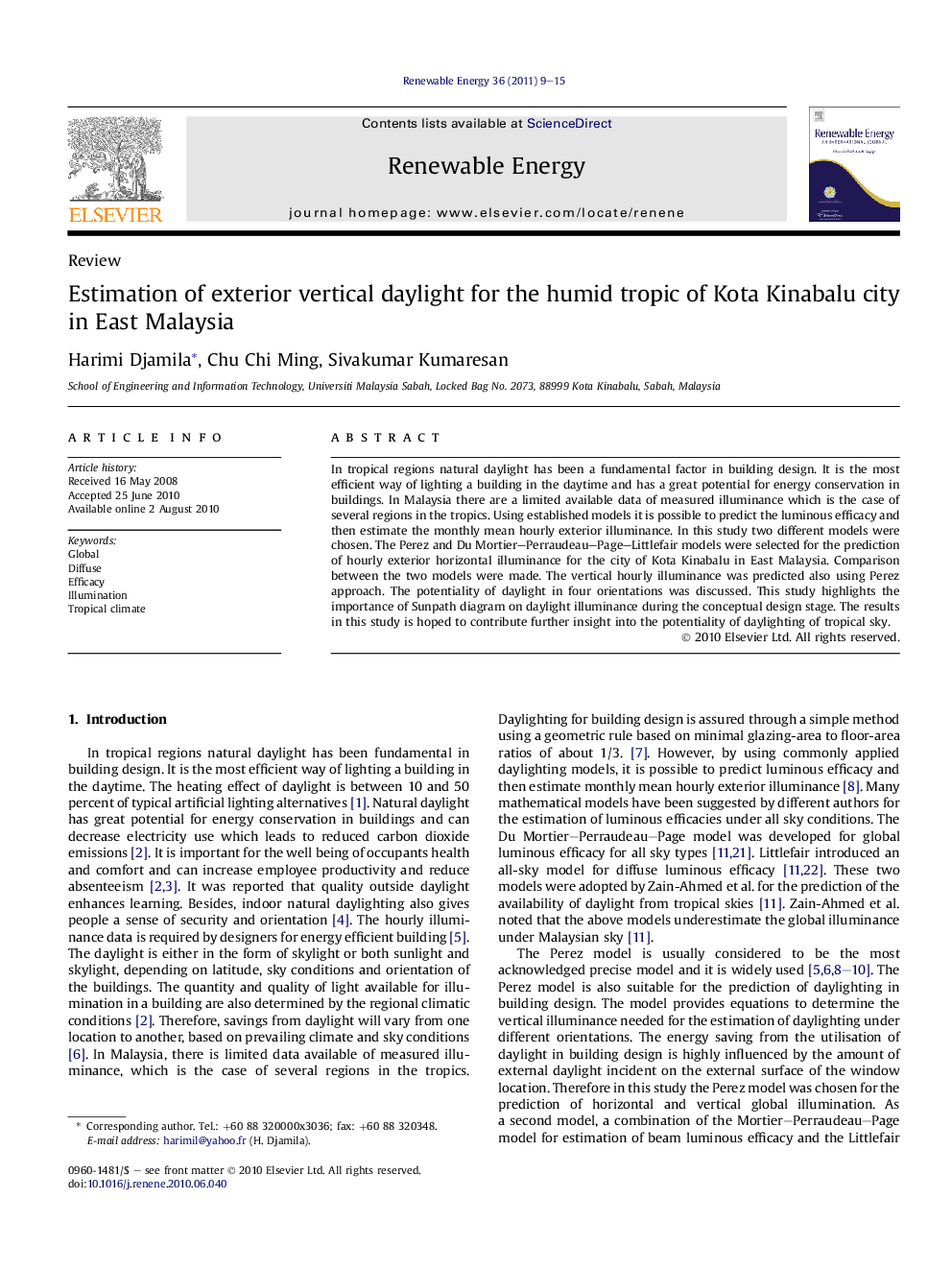| Article ID | Journal | Published Year | Pages | File Type |
|---|---|---|---|---|
| 301661 | Renewable Energy | 2011 | 7 Pages |
In tropical regions natural daylight has been a fundamental factor in building design. It is the most efficient way of lighting a building in the daytime and has a great potential for energy conservation in buildings. In Malaysia there are a limited available data of measured illuminance which is the case of several regions in the tropics. Using established models it is possible to predict the luminous efficacy and then estimate the monthly mean hourly exterior illuminance. In this study two different models were chosen. The Perez and Du Mortier–Perraudeau–Page–Littlefair models were selected for the prediction of hourly exterior horizontal illuminance for the city of Kota Kinabalu in East Malaysia. Comparison between the two models were made. The vertical hourly illuminance was predicted also using Perez approach. The potentiality of daylight in four orientations was discussed. This study highlights the importance of Sunpath diagram on daylight illuminance during the conceptual design stage. The results in this study is hoped to contribute further insight into the potentiality of daylighting of tropical sky.
